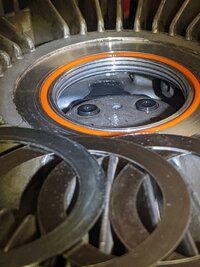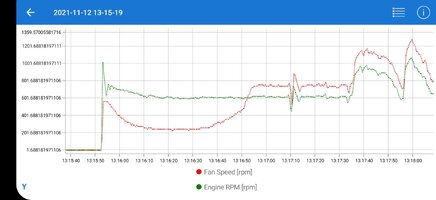Has anyone done this?
I have rebuilt fan clutches on other vehicles. It cost about $15 for the special oil.
The Trailblazer has 75k on it and the fan clutch is not operating like new. A new one will fix it, but Im looking for info on the rebuild as to what weight oil and even if it can be done. Such oil is not described in terms of weight but CST, my other vehicle used a 10,000CST oil. I assume the Chevy would be similar???
I have rebuilt fan clutches on other vehicles. It cost about $15 for the special oil.
The Trailblazer has 75k on it and the fan clutch is not operating like new. A new one will fix it, but Im looking for info on the rebuild as to what weight oil and even if it can be done. Such oil is not described in terms of weight but CST, my other vehicle used a 10,000CST oil. I assume the Chevy would be similar???





